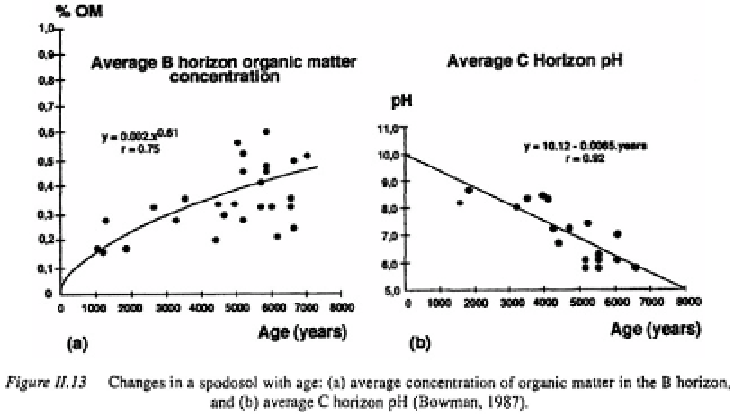Agriculture Reference
In-Depth Information
4.4.2
TROPICAL CLIMATES
In the humid tropics, the intense weathering is considered to result largely from
hydrolysis, rather than the action of aggressive organic compounds. These latter appear
to have a limited influence on the weathering zone since, with exception of certain
deeply-weathered rainforested soils (Section I.3.2.4.3), organic matter generally accu-
mulates close to the surface. Ferrallitisation may be achieved through three successive
stages leading to a series of progressively more weathered soils (Duchaufour, 1991):
Fersiallitisation
Fersiallitic soils are those in which neoformed or inherited silica-rich 2:1 clay minerals
persist in the profile and the exchange complex remains saturated, or nearly so.
They occur in environments with strong seasonal contrasts. Clay eluviation leads to
the gradual formation of an argillic Bt horizon and its red colour betrays the common
presence of haematite (fersiallitic soils, Duchaufour, 1982; largely alfisols, some ultisols;
Soil Survey Staff, 1999).
Ferrugination
In ferruginous soils much of the original clay has been destroyed and some
desilicication has occurred. The primary minerals have been largely replaced by
neoformed kaolinite although some 2:1 clays are still present. Base status is variable
depending on the length and intensity of the dry season. These soils are known as
ferruginous tropical soils (Duchaufour, 1982; some alfisols, mostly ultisols, Soil Survey
Staff, 1999).

